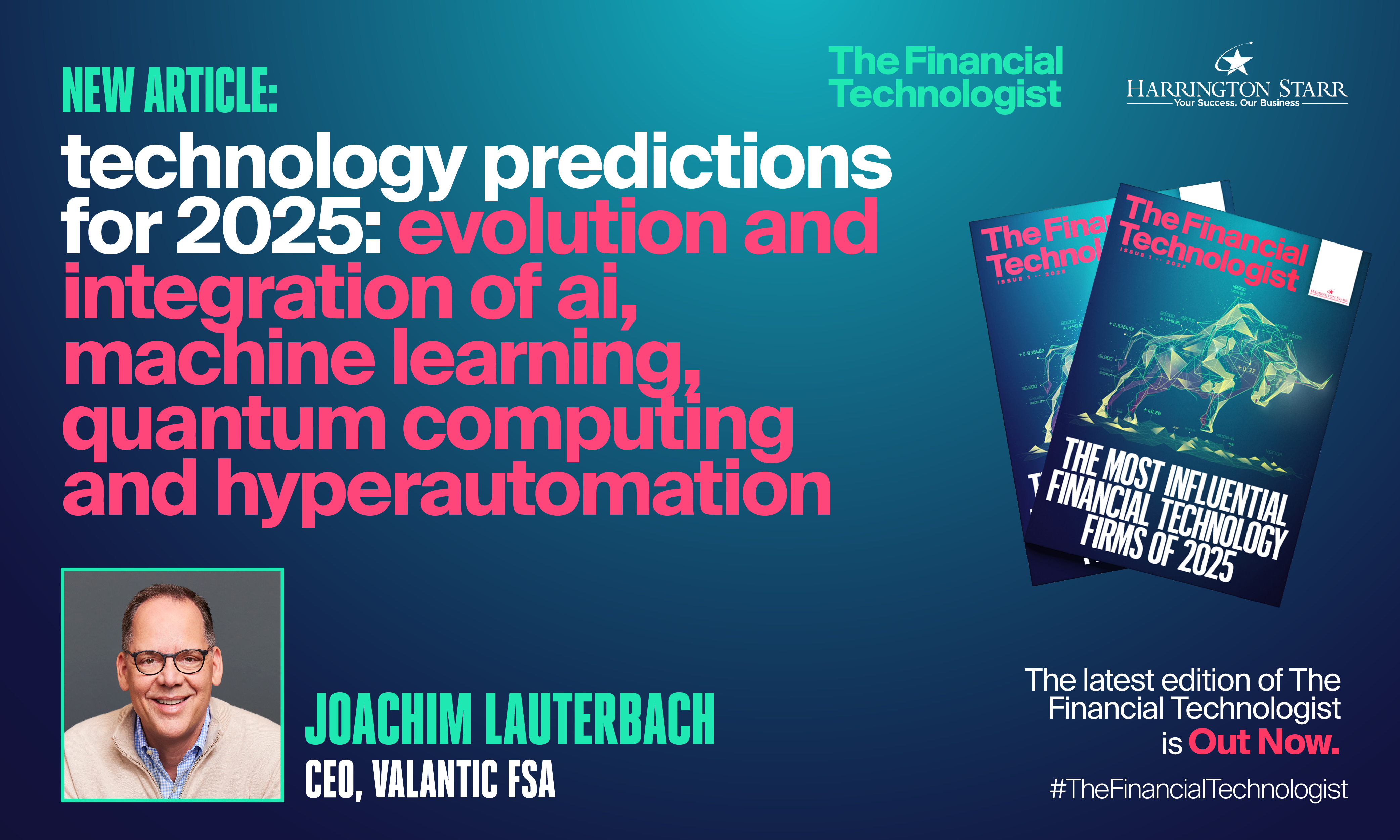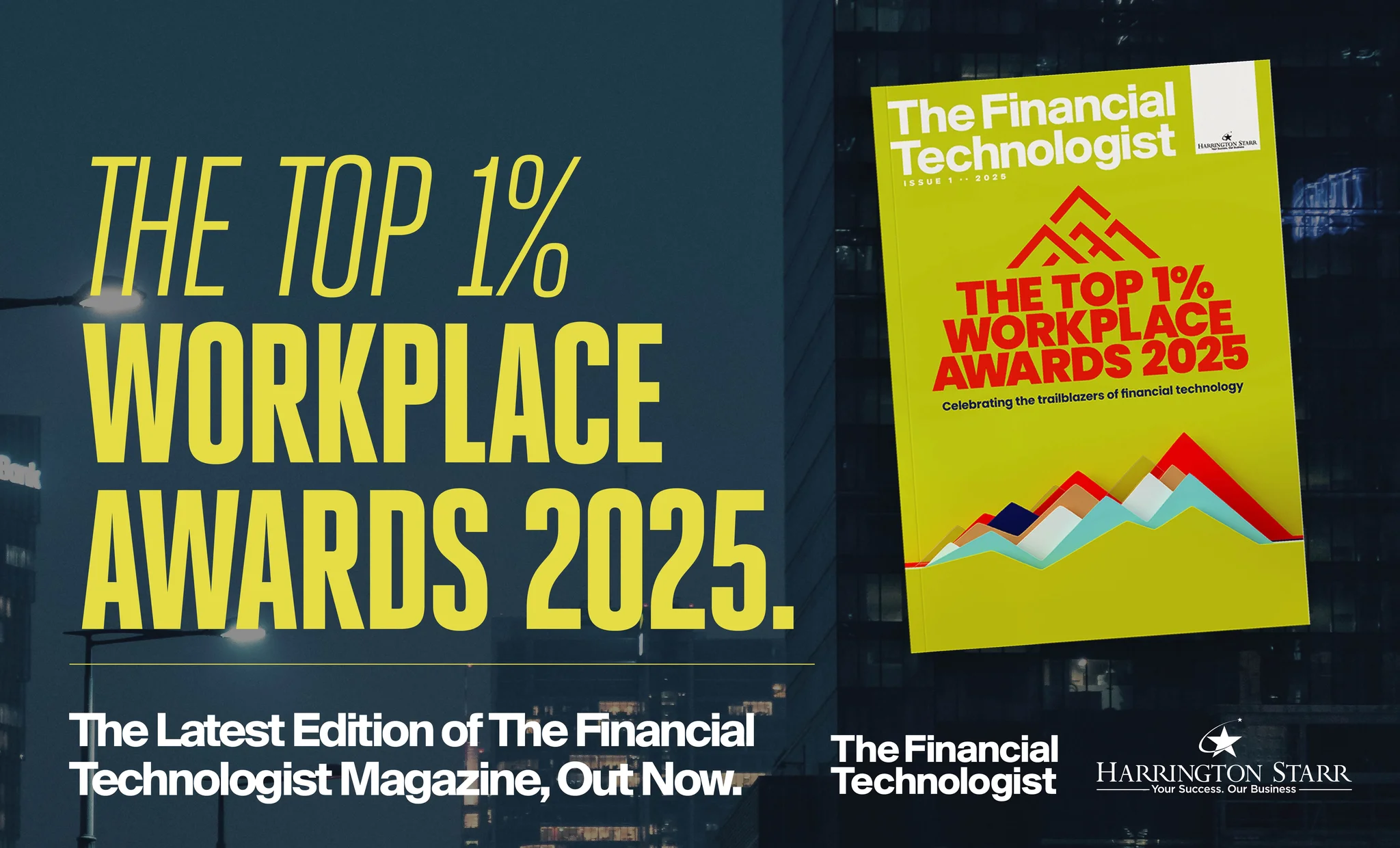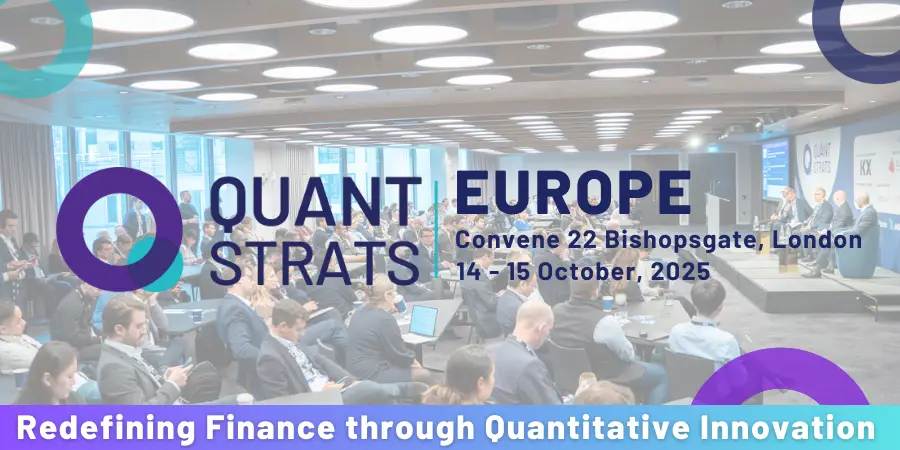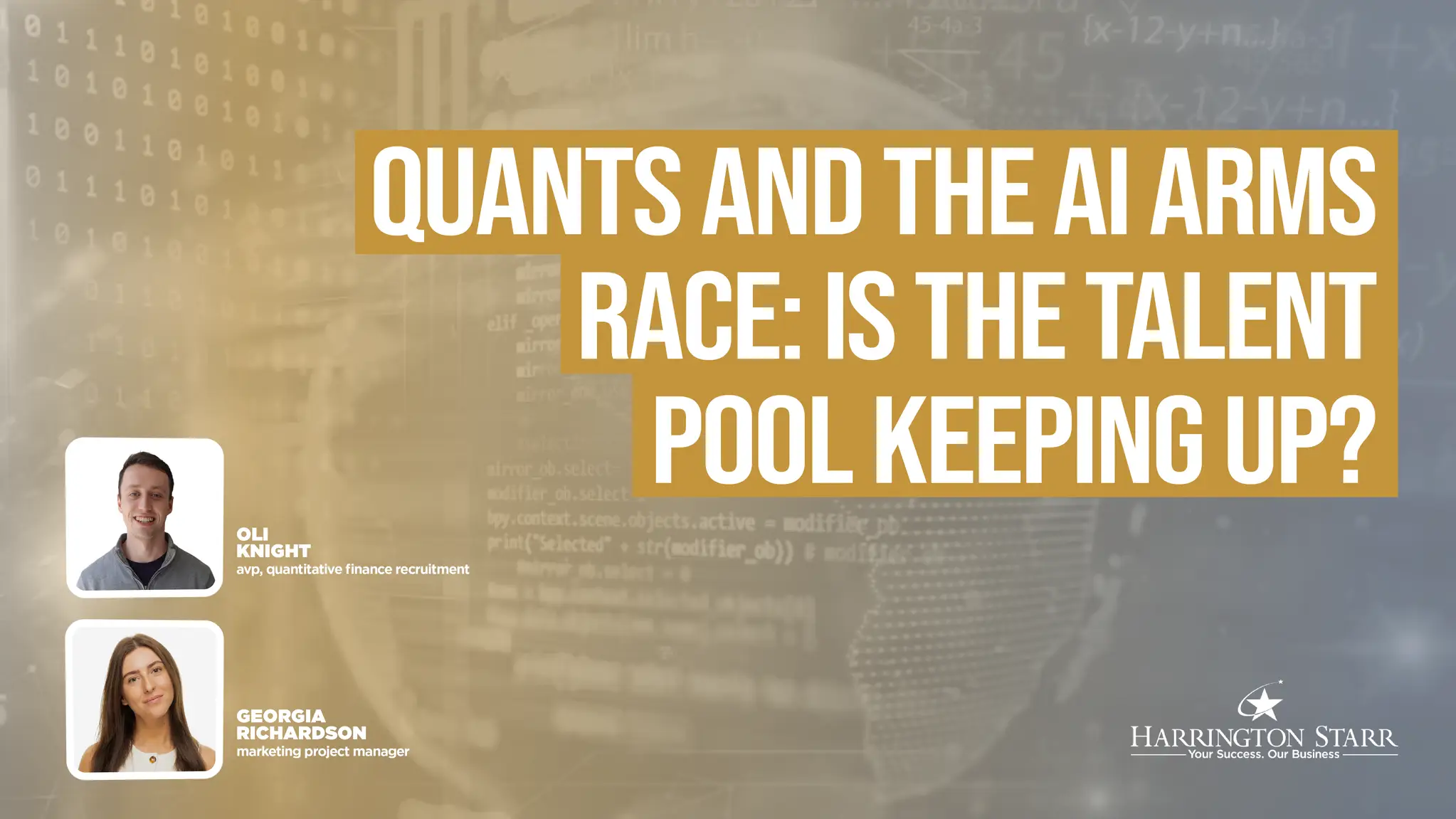Download your free copy of the latest Financial Technologist magazine here.
It would be nigh on impossible for today’s global financial market participants to ignore the opportunity and potential value of artificial intelligence (AI), machine learning (ML) and other ‘new’ technologies in the provision of financial services. A recent survey by J P Morgan (E-Trading Edit published February 2025) recognised AI and ML as the most influential technologies for trading (for the third year in a row), topping the list of technological advancements impacting this industry in 2025.
Let’s dig a little deeper into how these - and other - technologies will transform the financial trading ecosystem, making some bold predictions for 2025 and beyond. (These predictions are ‘guestimates’ based on market intelligence and conversations with our customers, partners and industry peers).
AI-Driven Process Automation
Prediction: In 2025, up to 80% of financial institutions are expected to adopt some degree of AI-driven processing, particularly with respect to data entry and reporting, with an associated and potentially significant reduction in manual workflows and costs.
Despite enormous technological advances in recent decades, financial firms continue to still face inefficiencies in document processing, risk assessment, and decision-making. AI will drive greater automation in risk reporting, financial forecasting and scenario analysis, with generative AI becoming an essential component of agile financial modelling.
Intelligent bots will streamline reconciliation and KYC processes and compliance workflows, enhancing middle and back-office efficiency. AI-driven chatbots and predictive analytics will enhance the customer experience and enable proactive decision-making, revolutionising customer interactions.
Another term that we’ll be hearing much more about in 2025 is hyperautomation.
Hyperautomation integrates multiple technologies like AI, ML and RPA (Robotic Process Automation) to enhance business process automation, particularly with respect to repetitive tasks that can be major contributors to operational bottlenecks.
Hyperautomation is a crucial element in digital transformation, removing human involvement in low-value, repetitive tasks and providing in-depth, data-led business intelligence, both pivotal in the development of an agile organisation that can respond and adapt very quickly to economic shifts and volatile markets.
Agentic AI, that can learn - and act - without human intervention, goes even further with respect to data processing speed (and scale), adapting automatically to fast-changing and complex market conditions and supporting the delivery of much more personalised customer experiences. While AI may support more autonomous decision-making support, regulatory obligations and risk management rigour mean that full autonomy (removing human oversight) is unlikely.
Reduced Regulatory Compliance Workloads, Improved Reporting Accuracy
Prediction: Artificial Intelligence (AI) will reduce regulatory compliance workloads by 40%, cutting costs and improving accuracy.
This prediction is supported by several studies and expert analyses. A McKinsey survey indicates that 44% of respondents reported cost savings from AI adoption in business units, streamlining operations and reducing the cost and effort associated with compliance. While precise figures may vary across organisations and industries, the consistent trend points toward AI significantly diminishing compliance workloads.
Financial institutions and firms are, understandably, subject to particularly rigorous regulatory scrutiny and complex compliance obligations. AI-led automation can revolutionise compliance by continuously monitoring regulatory updates, analysing the implications of change, and suggesting real-time policy adaptations. AI-powered financial reporting underpinned by Natural Language Processing (NLP) and Large Language Models (LLMs). will enhance risk assessment, regulatory filings and policy alignment with multiple, evolving, global regulations.
The International Monetary Fund (IMF) has highlighted that AI advancements are reshaping risk and compliance management by automating decisions and leveraging extensive data sets, improving quality and reducing compliance costs. Going even further, automated compliance frameworks can translate regulatory changes into executable code for assured, seamless adherence.
AI-Driven Asset and Wealth Management
Prediction: 50% of asset managers will leverage AI-enhanced investment strategies, outperforming traditional models.
As this burgeoning sector evolves, AI technologies can be critical to generating data-driven investment insights, enhancing risk assessment and management and creating much more personalised and responsive portfolio recommendations.
Predictive analytics and ML-driven risk-adjusted returns optimisation help investment managers optimise returns and mitigate downside risks. AI-driven digital asset strategies, for example, tokenisation of real-world assets (RWA), will also redefine liquidity and market access.
First Use Cases for Quantum Computing in Finance
Prediction: Financial firms will more actively explore early-stage quantum applications, particularly in risk modelling and encryption resilience. However, widespread implementation is still some years away.
Quantum computing has the potential to revolutionise financial risk modelling and fraud detection, offering exponentially faster calculations compared to traditional computing. Quantum Monte Carlo methods will provide superior risk assessments and financial simulations, significantly enhancing portfolio optimisation.
With quantum threats looming, financial firms will adopt new encryption methods to safeguard transactions, ensuring quantum-safe cryptography. Additionally, fraud detection systems will incorporate hybrid AI-Quantum solutions, leveraging quantum-powered pattern recognition for enhanced security.
Focus on DORA and Cybersecurity in Financial Services
Prediction: Majority of financial firms in Europe will face major IT security audits under DORA.
The EU’s DORA regulatory framework mandates that financial firms (and their third-party service providers) implement - and can demonstrate - robust IT risk management, incident reporting and cybersecurity frameworks and associated performance measurement mechanisms. Now mandated by EU (and aligned UK) law to enhance and enforce resilience processes, there is a crucial role for AI to play with respect to threat detection, monitoring cybersecurity in real time, detecting and resolving anomalies and preventing security breaches.
With DORA, continuous cybersecurity stress testing is set to become standard practice across financial institutions and AI tools will be a key facilitator of DORA compliant workflow automation to meet new regulatory obligations.
Greater scrutiny of ESG and sustainability reporting
Prediction: AI-driven ESG reporting tools will be mandated for institutional investors in EU
Some regulatory bodies, notably in the EU, are intensifying scrutiny on ESG compliance, and sustainability risk assessment and reporting. This is an enormous opportunity for AI-powered predictive models that can assess companies' long-term environmental and social impacts. AI-driven tools also support alignment with disparate regulatory (SFDR, CSRD etc.) and EU Taxonomy requirements, bridging the gap between ESG data analytics and regulatory compliance.
The pace of technological innovation and digital transformation continues to accelerate. AI, quantum computing, blockchain and other digital technologies alone - and together, as hyperautomation solutions - continue to be the driving forces behind financial services evolution. In 2025 and beyond, and in an increasingly digital and complex financial landscape, it is a question of how, not whether financial institutions embrace these technologies to remain competitive, compliant and operationally efficient.
By Joachim Lauterbach, CEO at valantic FSA
Download your free copy of the latest Financial Technologist magazine here.







